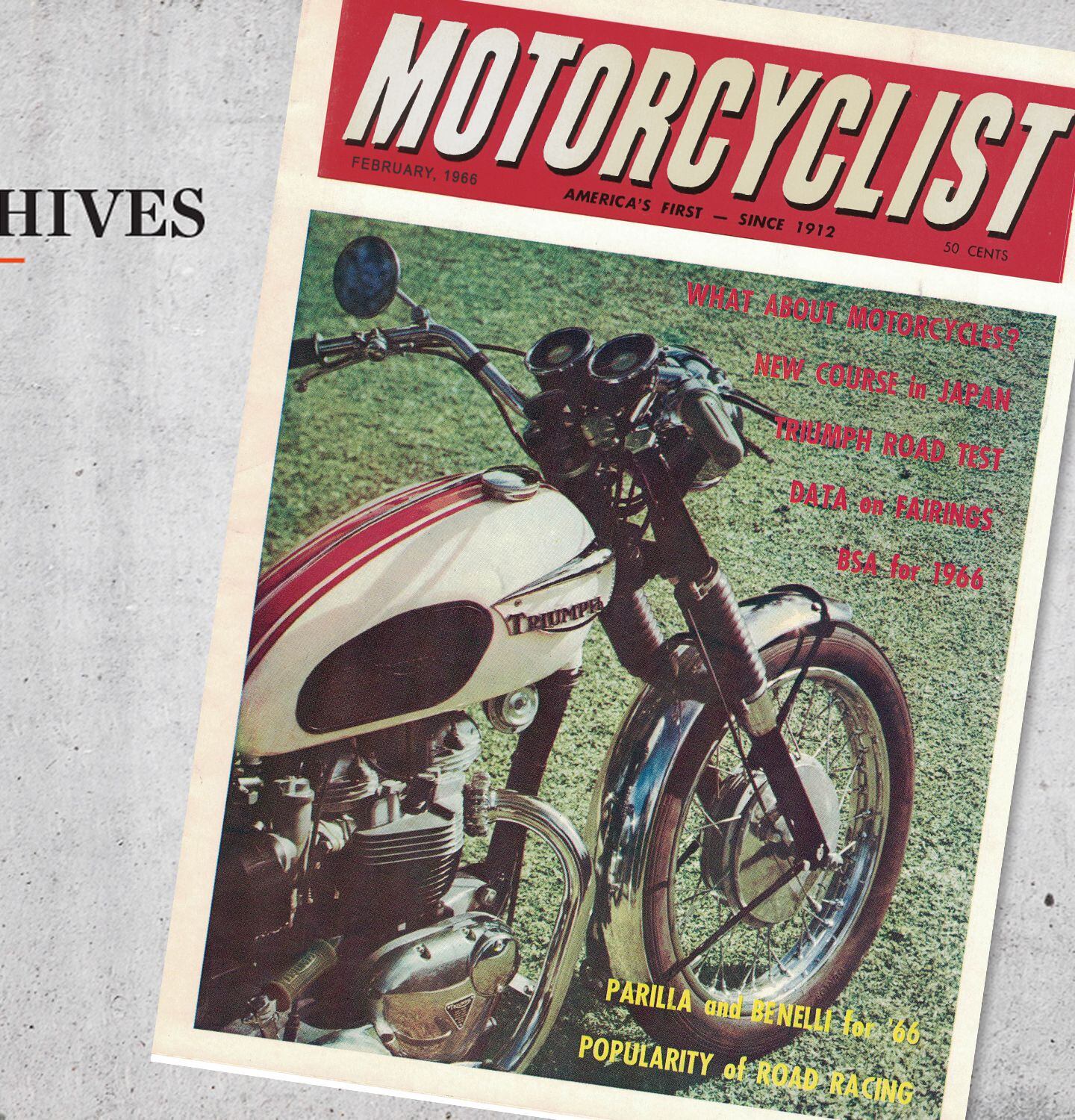Laverda 1000 Jarama—The Orphan From Italy Has a New American Distributor and the Credentials of a Lamborghini
This Laverda has an interesting name derived from the Spanish Circuito del Jarama Grand Prix track located in the province of Madrid. The Jarama was being introduced by its third distributor in an attempt to tame the American motorcycle market since the first ones touched US soil in 1969.
The 1000 from Italy signaled a departure from past engine designs which closely resembled (inside and out) the Honda Hawk motors of the 1960s. The new triple was strongly influenced by the BSA/Triumph 750cc triple. Engine design did not limit itself to the British bikes of its day. There were internal elements within the cases that seemed to be borrowed from Japanese machines as well. The timing of the mill was a bit different and might sound more like a modern crossplane Yamaha than an equidistant 120-degree firing order. There is a great deal of technical information in this piece about the motor. Suffice it to say that the there was a lot of effort put into making an engine that was both reliable and sporting.
The 1000 Jarma was known to be heavy but highly tunable, reliable, and receptive to weight-shedding. At the time that the article was printed, the author notes that the Jarama was still successful at popular production racing events. A few things stood out that made the Jarama adaptable as well. The shifter could be relocated from the left to the right side of the engine case quite easily; the foot pegs could be raised or dropped; and the handlebar geometry could be adjusted from a touring position to a race position with an included Allen wrench.
A well supported double-cradle frame offered great rigidity while Timken tapered roller bearings held the stem for the Cerini fork assembly. Needle bearings on the swingarm help to make the ride comfortable and compliant.
The final conclusion: the 1978 1000 Jarama was a capable sport tourer and adaptable to many riding styles.
The Turbo Shadow—The First Café Racer From the Mysterious World of Sidecars
This wild Honda on three wheels was certainly peculiar in design, but Steve Young's 150 horsepower rig was capable of speeds in excess of 100mph. Even in this small subset of motorcycling, the sidehack in question stands out as abnormal.
Young was a professional painter by trade and was known to paint for sidehack specialist Doug Bingham of Side Strider where the transformation of Young’s 1969 CB750 began.
By 1973 when the hack began development, young had built and rebuilt his 750 motor bringing it up to a massive 980 cc. Along the way, the motor spent some time in various sizes including 811, 836, and 890 before reaching the nearly liter size. The power development did not stop there but first, the side hack. The sidecar was finished and dubbed the Side Strider Mark II. It was designed to be aerodynamically streamlined to reduce drag, and create downward force to keep it on the road at speed.
Little was done to the bike other than mating to to the sidecar and Young was sent down the road. Three months later, the Side Strider Mark II and Steve found themselves in a ditch in a sandy turn. The accident was at relatively low speed and the pilot walked away but the machine was not as lucky. The bike and sidehack were an almost complete total meant it was time to get more creative and Young did just that.
Steve had some ideas about aerodynamics, frame construction and rake and trail he wanted to explore and did just that. When he was done, he had added 3 inches to the width of the car, blended in the wheel well to increase aerodynamics put car tires and onto a set of Crager spun aluminum wheels and fabricated his own rotors (2 front and 1 rear) to mate to Hurst calipers. The brake setup was stronger and lighter than the original single disc arrangement. Now that the much needed stock braking was improved, performance was enhanced with a turbo. At full boost it was estimated to have 150 horsepower. By 1978 standards, that was massive.
By the time Steve was done with this machine, he had an estimated $15,00 into the project and a new name. The machine was now called The Turbo Shadow.










/cloudfront-us-east-1.images.arcpublishing.com/octane/VO22BQ2MMRVJLZLAPMCAI3UWJU.jpg)









/cloudfront-us-east-1.images.arcpublishing.com/octane/2WF3SCE3NFBQXLDNJM7KMXA45E.jpg)
/cloudfront-us-east-1.images.arcpublishing.com/octane/G4MG6OUCJNBSHIS2MVVOTPX65E.jpg)
/cloudfront-us-east-1.images.arcpublishing.com/octane/IIGGWFOTOJGB7DB6DGBXCCMTDY.jpg)
/cloudfront-us-east-1.images.arcpublishing.com/octane/QSTCM6AVEZA5JJBUXNIQ3DSOF4.jpg)
/cloudfront-us-east-1.images.arcpublishing.com/octane/U4I7G625B5DMLF2DVIJDFZVV6M.jpg)
/cloudfront-us-east-1.images.arcpublishing.com/octane/B6XD6LS6IVCQPIU6HXDJSM3FHY.jpg)
/cloudfront-us-east-1.images.arcpublishing.com/octane/ICL63FEDDRDTTMINYICCEYGMDA.jpg)
/cloudfront-us-east-1.images.arcpublishing.com/octane/FCGZHQXRBZFLBAPC5SDIQLVF4I.jpg)
/cloudfront-us-east-1.images.arcpublishing.com/octane/WNOB6LDOIFFHJKPSVIWDYUGOPM.jpg)

/cloudfront-us-east-1.images.arcpublishing.com/octane/X33NU3E525ECRHXLNUJN2FTRKI.jpg)
/cloudfront-us-east-1.images.arcpublishing.com/octane/6KKT5NNL2JAVBOXMZYS5ZO76YA.jpg)
/cloudfront-us-east-1.images.arcpublishing.com/octane/J5RKG5O455GMPGQRF2OG6LRT7A.jpg)
/cloudfront-us-east-1.images.arcpublishing.com/octane/GX2CIZKQVRH2TATDM26KFG2DAE.jpg)
/cloudfront-us-east-1.images.arcpublishing.com/octane/ZWIDYSAKQZHD5BHREMQILXJCGM.jpg)
/cloudfront-us-east-1.images.arcpublishing.com/octane/CYUHJZCTSJCH3MRAQEIKXK7SCQ.jpg)
/cloudfront-us-east-1.images.arcpublishing.com/octane/LKOFINY56FCXJCANJ5M7ZDQUBY.jpg)
/cloudfront-us-east-1.images.arcpublishing.com/octane/4NBPDACMWJH63JQYJVK3QRBDZI.jpg)
/cloudfront-us-east-1.images.arcpublishing.com/octane/KKHQHRR3FJGX7H2IPU6RALMWG4.jpg)

/cloudfront-us-east-1.images.arcpublishing.com/octane/5IOFS5JAE5FOXMNA23ZRAVVYUU.jpg)
/cloudfront-us-east-1.images.arcpublishing.com/octane/CGXQ3O2VVJF7PGTYR3QICTLDLM.jpg)

/cloudfront-us-east-1.images.arcpublishing.com/octane/OQVCJOABCFC5NBEF2KIGRCV3XA.jpg)